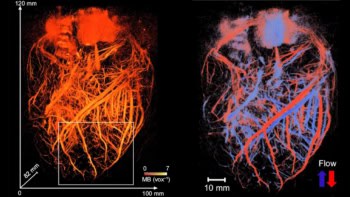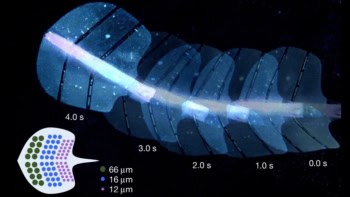
A neutron study of a common component of HIV drugs has revealed that the component is not as good at bonding as had been thought. The study, performed by an international group of researchers, highlights aspects of the drug component that could be improved to make it better at mitigating the effects of HIV.
HIV is a virus that replicates through use of a person’s immune system. HIV implants genetic information into the immune system’s T-cells, which then produce copies of the virus until they die. Once enough T-cells have died from churning out HIV, the person is unable to ward off other infections and they are said to be suffering from AIDS.
Inhibiting tactics
The best known way of tackling HIV is through antiretroviral drugs (ARVs). These medical cocktails consist largely of chemicals known as “reverse transcriptase inhibitors”, which prevent HIV from generating its DNA in a T-cell, and “protease inhibitors”, which prevent an enzyme known as HIV-1 protease from chopping up newly made proteins into the right segments to construct a functional HIV. Protease inhibitors do the latter by bonding to HIV-1 protease themselves, so that the enzyme cannot bond – and chop up – anything else.
Previously, scientists have studied how protease inhibitors bond to HIV-1 protease through use of X-ray crystallography. X-rays scatter off an atom’s electron cloud and so give an indication of an atom’s location and what it is bonded to. But protease inhibitors bond to HIV-1 protease largely with hydrogen bonds and since hydrogen atoms have only one electron they are almost invisible to X-rays. According to biochemist Andrey Kovalevsky at Oak Ridge National Laboratory in Tennessee, US, hydrogen bonds can be inferred only from very high-resolution X-ray crystallography, which is difficult to perform on protease inhibitors and enzymes.
Now Kovalevsky, together with Paul Langan at Oak Ridge and colleagues from elsewhere in the US, the UK and France, has tried a more direct approach to study the interactions between protease inhibitors and HIV-1 protease – neutron crystallography. Unlike X-rays, neutrons scatter off atomic nuclei but, more importantly, they scatter just as well off hydrogen as any other type of atom. As a result, neutrons can directly pinpoint the location of hydrogen bonds and how strong they are.
Growing challenges
Kovalevsky and colleagues performed their study on a protease inhibitor known as Amprenavir, using the continuous neutron beam at the Institut Laue-Langevin (ILL) in Grenoble, France. Neutron beams are generally weaker than X-ray beams and therefore need larger crystals off which to scatter. However, proteins such as HIV-1 protease do not readily form large crystals; growing them was one of the international group’s main challenges. “You have to try different methods for crystal growth,” says Kovalevsky. “It’s a very time-consuming and arduous job.”
X-ray studies of the interactions between Amprenavir and HIV-1 had suggested that there were seven hydrogen bonds between the molecules, says Kovalevsky. The latest neutron-scattering results from ILL, however, show that there are in fact just four hydrogen bonds, two of which are weaker than previously thought.
Kovalevsky believes that by tailoring the geometry and functional groups of protease inhibitors like Amprenavir, drug designers will be able to make them form stronger hydrogen bonds with HIV-1 protease. “Now we know we just blindly took it for granted that we have all this hydrogen bonding, which we don’t,” says Kovalevsky. “Neutron crystallography comes in here as a very powerful technique.”
Anna Llobet, an expert in neutron scattering at Los Alamos National Laboratory in New Mexico, US, says that the latest ILL study is one of just a handful that have used neutrons to examine the effectiveness of drug interactions with disease targets. “This is not really a new physics development or application at all, but it is significant for understanding drug binding – both for computational analysis, [and computer] drug design, etc,” she says.
However, chemist Claudiu Supuran at the University of Florence in Italy believes that the interpretation of neutron-scattering results, in particular the strength of hydrogen bonds, is still somewhat subjective. He also says that the efficacy of a drug is the result of more than one type of bonding and that Amprenavir is known to be effective at tackling HIV-1 protease in other ways. “I agree it is a nice paper, but it has added 1% to our knowledge on designing protease inhibitors,” he adds.
The research is published in the Journal of Medicinal Chemistry.
- Take a look at our video on the myriad of activities that take place at the ILL and how researchers there use neutrons to study the properties of matter.



